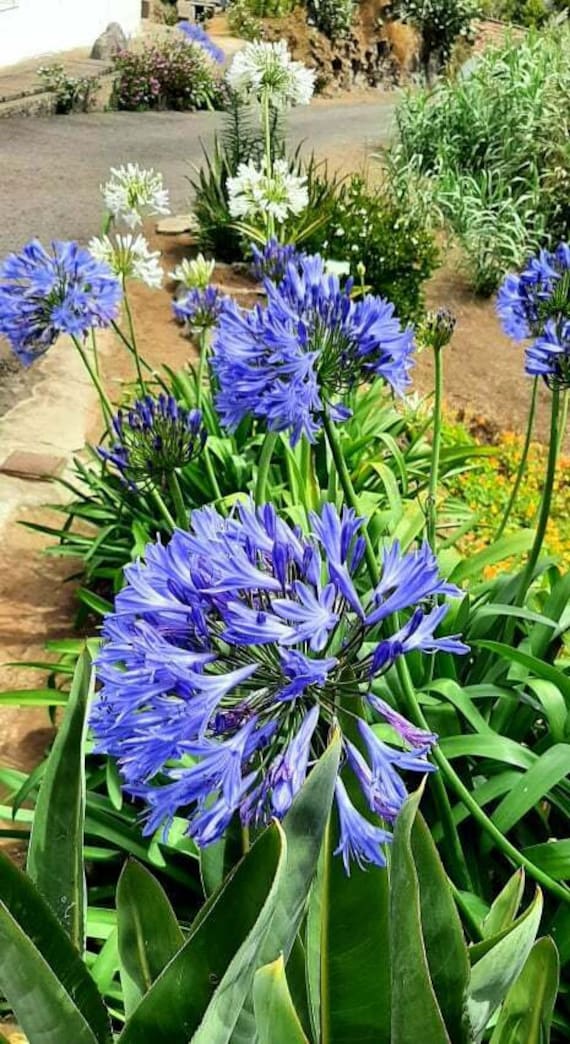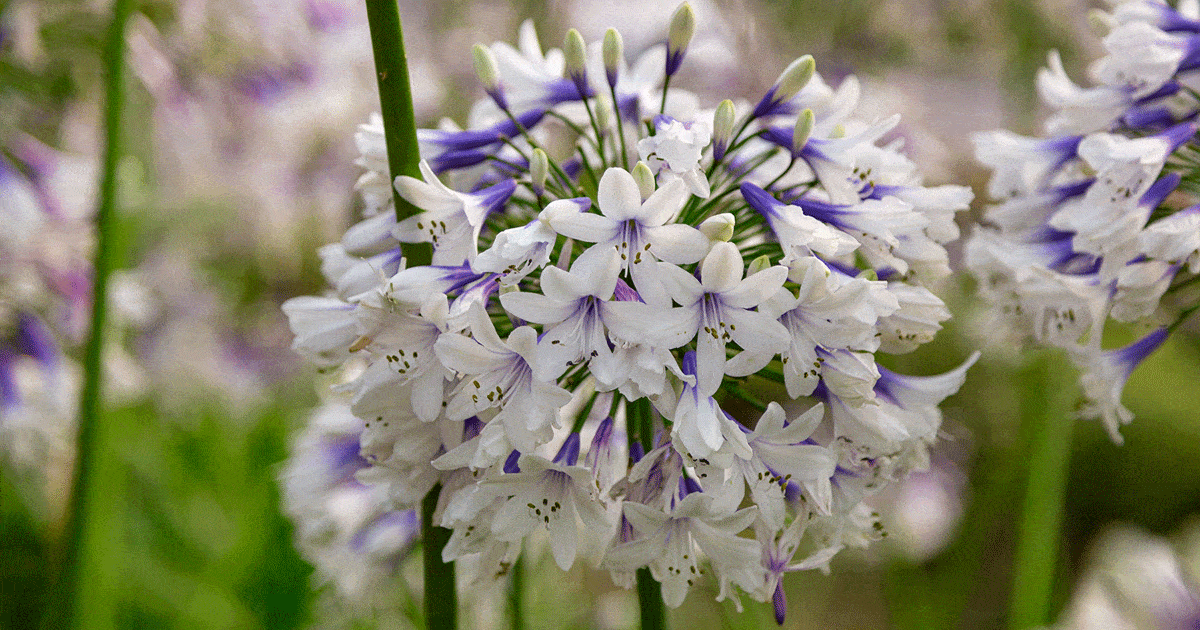Agapanthus Propagation: Tips for Expanding Your Plant Collection
Agapanthus Propagation: Tips for Expanding Your Plant Collection
Blog Article
Letting Loose the Secret to Successful Agapanthus Farming: Tips and Techniques for a Flourishing Yard
In the world of horticulture, cultivating agapanthus successfully calls for a strategic technique that incorporates different elements of plant care. By recognizing the nuances of agapanthus cultivation, one can produce an environment where these plants prosper and grow abundantly.
Growing Agapanthus: Ideal Practices
When planting Agapanthus, correct dirt prep work is essential for guaranteeing effective growth and growth of these beautiful blossoms. Agapanthus, commonly known as Lily of the Nile or African lily, flourishes in well-draining soil with a somewhat acidic to neutral pH degree - Agapanthus. Prior to planting, it is essential to change hefty clay dirts with natural issue such as garden compost or peat moss to boost drainage and offer vital nutrients for the plants
To grow Agapanthus, pick a location that receives full sunshine to partial color, as this will certainly advertise healthy and balanced growth and plentiful flowering. Dig an opening twice the diameter of the plant's root ball and position the Agapanthus at the very same depth it was formerly growing. Delicately backfill the opening with dirt, pushing down strongly to get rid of any kind of air pockets around the origins.
Water the freshly grown Agapanthus extensively and remain to maintain the dirt uniformly damp, particularly during the plant's active growing season. Agapanthus. Applying a well balanced plant food once a month can additionally support the plant's growth and flowering. By following these best practices for growing Agapanthus, you can produce a sensational screen of these captivating flowers in your garden
Perfect Dirt Issues for Agapanthus
For ideal development and flowering success of Agapanthus plants, making certain the soil problems are optimal is essential. Agapanthus favors soil that is abundant in nutrients, so incorporating a well balanced fertilizer throughout the expanding season can promote healthy development and dynamic blooms.

Watering and Feeding Tips
To make certain healthy and balanced development and lively flowers, appropriate watering and fertilizing techniques are important for successful Agapanthus cultivation. Agapanthus plants profit from normal watering, specifically throughout the growing season.
When it comes to feeding Agapanthus, a well balanced plant food with equal components nitrogen, phosphorus, and potassium can be applied in the spring to promote healthy and balanced development and blooming. Slow-release fertilizers are optimal for offering nutrients gradually over an extended duration. Prevent over-fertilizing, as this can result in excessive vegetation development at the cost of blooms.
In addition, integrating organic matter like garden compost into the soil can boost nutrient levels and improve dirt structure, aiding in the total health and wellness of the Agapanthus plants. By following these watering and fertilizing pointers, gardeners can guarantee their Agapanthus plants prosper and create stunning display screens of flowers.
Trimming and Deadheading Methods
Proper trimming and deadheading techniques play a vital role in keeping the health and wellness and visual appeals of Agapanthus plants, matching the necessary techniques of watering and fertilizing for successful farming. Pruning Agapanthus entails eliminating invested flower heads, yellowing or dead fallen leaves, and overall shaping of the plant to advertise better development. Deadheading, the procedure of removing faded blossoms, not just improves the plant's look but additionally motivates more blooming.
When deadheading Agapanthus, it is suggested to snip off the blossom stem at the base utilizing sharp, tidy shears. browse this site This procedure redirects the plant's power from seed production back into origin and vegetation development, promoting a healthier and a lot more robust plant. Routine deadheading can expand the growing duration of Agapanthus and prevent self-seeding, which can lead to overcrowding.
In regards to pruning, Agapanthus typically take advantage of a light trim after flowering to tidy up the plant and motivate fresh growth. Cutting back the spent flower stems and eliminating any type of damaged or dead foliage assists keep the plant's vigor and overall look. However, it is vital to prevent reducing right into the crown of the plant, as this can weaken its health and wellness.

Protecting Agapanthus From Pests and Diseases
Implementing reliable bug and illness management strategies is crucial to guarding the health and wellness and vitality of Agapanthus plants in cultivation. Agapanthus are typically hardy plants, but they can still come down with various pests and diseases otherwise effectively looked after. One typical parasite that influences Agapanthus is the Agapanthus borer, a caterpillar that passages into the plant, triggering damage to the leaves and flowers. To stop invasions, routine evaluation of the plants is vital. If borers are discovered, they can be manually removed, or insecticidal soap can be used as a control action.
In enhancement to insects, Agapanthus are susceptible to conditions such as root rot and fungal leaf places. These problems can often be protected against by making sure proper water drainage and preventing overwatering. If signs of illness appear, impacted parts of the plant must be promptly eliminated to stop more spread. Fungicides may also be utilized as a treatment procedure, adhering to the manufacturer's instructions very carefully. By remaining cautious and addressing insect and illness problems immediately, garden enthusiasts can help their Agapanthus flourish and thrive.

Verdict
In conclusion, successful cultivation of see this agapanthus needs appropriate growing methods, excellent dirt problems, adequate watering and fertilizing, regular pruning and deadheading, and protection from diseases and pests. By following these tricks and suggestions, gardeners can guarantee a flourishing garden filled with gorgeous agapanthus blooms. Agapanthus. Remember to keep consistent treatment and attention to detail to advertise the health and long life of these stunning plants
When growing Agapanthus, correct dirt prep work is vital for making sure successful growth and growth of these stunning blossoms.Water the freshly grown Agapanthus thoroughly and proceed to maintain the soil equally damp, specifically during the plant's active growing season.For optimum development and flowering success of Agapanthus plants, guaranteeing the soil problems are excellent is critical. When hair go right here transplanting or growing Agapanthus, guarantee the soil is well-prepared to give the needed foundation for the plants to develop themselves effectively. One common parasite that impacts Agapanthus is the Agapanthus borer, a caterpillar that tunnels right into the plant, triggering damages to the fallen leaves and flowers.
Report this page